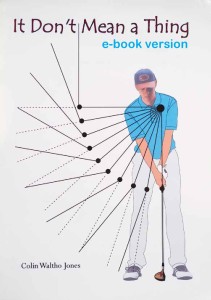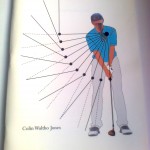This is a letter from me to John about some psychological impacts of “Par” and some thoughts on the pitfalls of learning how to do something.
5th June 2012
Dear John,
Par
It occurred to me after writing about uncontrollable extraneous factors that Par is just such a factor. This might sound odd because it is the one factor that never changes. But it is the fact that it never changes that makes it an uncontrollable extraneous factor. I’ll explain.
The par for each hole, the par for the front nine and the back nine, and the overall par is a yardstick that is deeply ingrained in a golfer’s psyche; mostly because of the crucial role that par has in determining a player’s handicap. A player’s handicap is very personal; it defines them as a golfer and is often the first attribute that is mentioned by a player when mentioning another player. For wholly practical purposes, par is expressed in round numbers (whole integers) and therefore has within the measure an assumption of virtually perfect, benign conditions. Ironically, in competitive circumstances it is rare for a hole to play to its published par expressed in a whole number.
As a measure of the difficulty of a hole the weakness of par has, over the years, been addressed in a number of ways; and with the advent of computers it is now possible to make adjustments to player’s handicaps with the difficulty of conditions of play built in to the calculations. However, psychologically for the player, it is very difficult to resist the damning glare of the round-numbered par. You may play a hole well, just miss a 10-footer for a par and walk off disconsolately because of the bogey that is now spoiling your card. Yet, in the fullness of time it could well come to be seen that the bogey was only a fraction over the true par for that hole on that day. Unfortunately for the player, the retrospective judgement comes too late to militate against the immediate psychological damage of the bogey.
What is so difficult about par as a yardstick is that it is there every time you step on to a course, no matter what the circumstances or conditions of play. Even in matchplay a player will often say “I won the hole with a par”, even though par has absolutely no logical place in matchplay. Par is an unremitting, unyielding measure. It even has the ability to undermine a perfectly satisfactory matchplay win, as is often heard in commentary at professional matchplay tournaments.
And, finally, par is an uncontrollable extraneous factor because there is no way of telling beforehand the distance that will eventually exist between the published par for the course and the actual par for any given day. The bigger the gap between the real par and the published par, the more likely it was that you will have been walking off greens trying to manage the psychological damage of a deflating bogey that actually was a perfectly acceptable “almost-par”.
To minimise the always inaccurate critical gaze of par I suppose, with experience, it would be perfectly possible to adjust the par for each hole according to conditions and then measure your actual score against the adjusted par. It sounds okay but unlikely to suit the mind-set of most golfers.
The problem of learning
This is how I see the natural process of learning to do something like hit golf balls.
- You watch others do it
- You mimic
- You get taught
- You self-teach
- You adjust technique using outcome as a guide
If you are very lucky, your first attempts to mimic a golf swing will involve you swinging like a pendulum, and then your results will be very good, very quickly. Under these circumstances, your technique will refine naturally because your success will prevent you from seeking out external solutions, for a while at least. At any point on the road to competency it is easy to get stuck with something that is less than helpful, and not realise that you have become stuck with it.
I think you are a natural “timer”. The chip/hip thing is an example of something you have burdened yourself with that you didn’t know you had thus yourself encumbered. This is an example of the dangers of conventional instruction, and with it the dangers of the received wisdom that you encapsulate with the word “fundamentals”.
To say that conventional instruction carries with it an inherent danger is not to in any way condemn it out of hand – that would be crass in the extreme; it is just worth pointing out what that danger is so that it can be avoided. The danger of conventional instruction is that it mostly delivers its wisdom as a set of things to do, or not do (the “fundamentals”). This is the conventional way of delivering knowledge and is wholly reliable if you want to remember what the capital of Mongolia is (Ulan Bator). It simply does not work when it comes to getting the best out of your subconscious, because knowledge is a conscious phenomenon and has the tendency to disrupt the subconscious’s search for a solution.
So, to give this prose some life: at some point you have decided to restrict the movement of your hips when chipping. I would be amazed if you could remember when this happened. It must have been a conscious decision or otherwise, given how much golf you have played, your subconscious’s need to locate “timing” would have had you rotating your hips by now.
If this man’s tip has relieved you of this burden of an artificial restriction to your swing then great news!! But, if you are not watchful, the tip will itself become a burden if you allow it to become a conscious instruction because it will take up valuable space and time when you trying to make your conscious give your subconscious the information it needs to locate “timing”.
To summarise: instructions are always double-edged swords and are to be treated with extreme caution. To get them to work without causing damaging disruption to the act of visualisation etc, they need to be something that you are vaguely aware of that you need to do (or not do) when you are visualising the rhythm of the swing. In other words, they need to be in the melting-pot but NOT the dominant flavour!
Regards,
Colin


